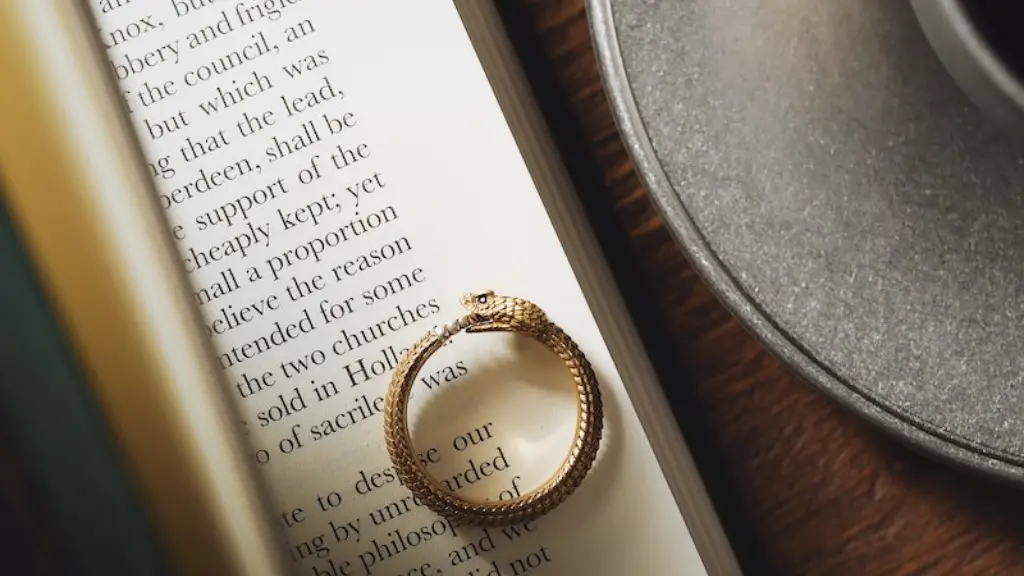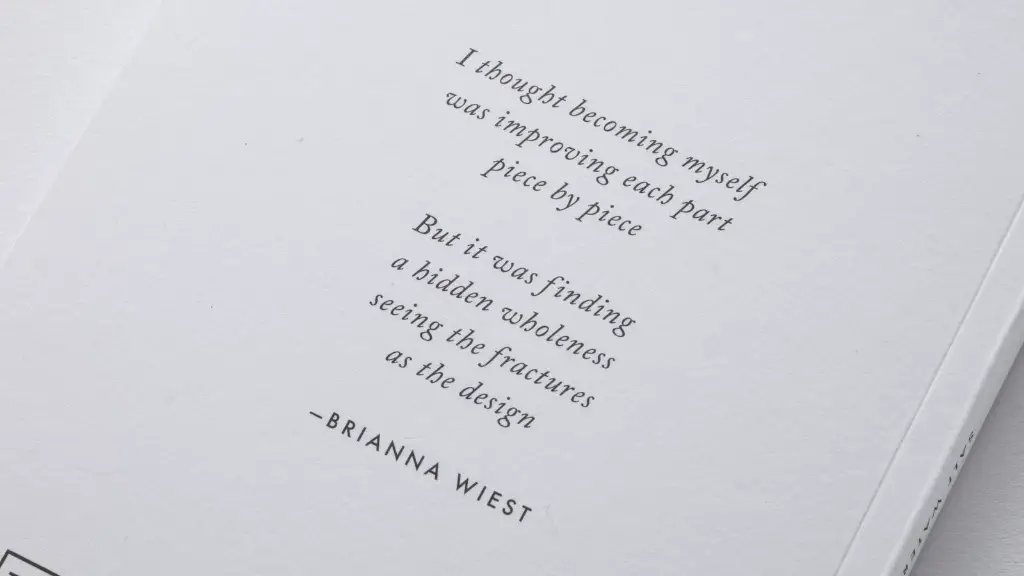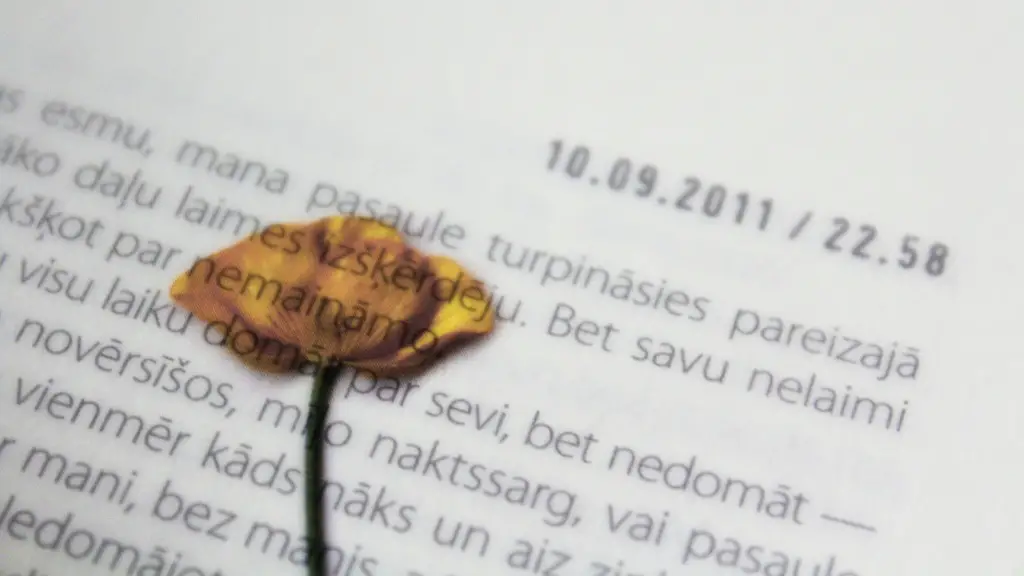Poetry and Its Origins
Poetry has been around for centuries, tracing its origins to Ancient Greece and the great epic poets in pre-Christian Europe. Poetry was an expression of life, an exploration of complex emotions, and a way to tell stories. Today, poetry remains popular, with many people writing poems to express and explore their own life experiences. But what are the parts of poetry?
Poetry has a few elements that are common to all poems. These common elements are rhythm, sound, imagery, metaphor, symbols, line breaks, rhyme, and form. The structure of a poem can vary greatly depending on the type, but all poems will have at least some of the common elements. Let’s take a closer look at each one.
Rhythm
Rhythm is the most fundamental element of a poem. It refers to the pattern of stressed and unstressed syllables in a line of poetry. This can be thought of as a type of “beat” or pulse to the poem, and it allows readers to anticipate the flow of the poem. The rhythm can be either consistent or varied, and it is a big part of what makes a poem sound good to the reader.
Sound
Sound is another important element of a poem. This refers to the pronunciation of words and how they create a certain sound. Alliteration and assonance are two types of sound used in poetry. Alliteration is the repetition of the same consonant sound at the beginning of two or more words and assonance is the repetition of the same vowel sound within two or more words. Both of these devices can be used to create a pleasing sound that enhances the poem’s overall effect.
Imagery
Imagery is the use of vivid language to describe a scene or moment. It can be used to evoke emotion in the reader and to help paint a picture of the scene in their minds. For example, a poet might use words such as “warmth” or “golden” to evoke a sense of summertime, or “cold” or “icy” to evoke a sense of winter. Imagery can also be used to help create a more powerful message in the poem.
Metaphor
A metaphor is a comparison between two different things without using the words “like” or “as.” For example, in a poem, somebody might say “my heart is a raging sea” to show that they are feeling overwhelmed with emotion. Metaphors can also be extended, meaning that a comparison between two things can be extended for multiple lines in a poem. This technique is often used to make a point more effectively.
Symbolism
Symbolism is the use of symbols to represent ideas or emotions. These symbols can be literal or metaphorical. For example, a poet might use the sun to symbolize hope and a stormy sky to symbolize despair. Symbols are often used to add depth and nuance to a poem’s message.
Line Breaks
The line break is also an important part of a poem. This is where the poet has chosen to break the poem into lines, which can vary greatly in length. Line breaks can be used to create visual effects and emphasis or to add rhythm to the poem. Some poets also use line breaks to change the meaning of a poem, by creating pauses or breaks in the flow of words.
Rhyme
Rhyme is another element of poetry. This refers to words that have the same ending sounds. Rhyme can be used to create a more musical sound in poetry and can also be used to help create a memorable message. Rhyme can also be used to create a feeling of resolution or closure at the end of a poem.
Form
Form refers to the way that a poem is structured. Different forms such as sonnets, villanelles, and haikus all have their own specific structures. The form of a poem can be used to help create the intended effect of a poem and to establish a certain rhythm and sound. Knowing the different types of forms can be helpful in creating a successful poem.
The Effects of Poetry
Poetry has a great power to affect and inspire readers. Even a simple poem can offer insight into life and can allow readers to gain a new perspective on something. Poetry can also provide an escape from reality and can help readers to process and express their emotions.
Poetry can help readers reflect on their life and to gain clarity in situations. It can provide emotional healing and can help to increase self-awareness. Poetry can also open up channels of communication and can be used to explore relationships and connect with others.
The Power of Poetry
The power of poetry lies in its ability to capture our attention and make us think. Poetry has the ability to tap into our emotions and can reveal things about ourselves and the world that we may otherwise miss. Poetry can be a great tool for self-expression and exploration, and the effects can last long after the poem is over.
Poetry can also be a form of activism, a way to raise awareness on social and political issues. Through powerful words and imagery, poets can create a sense of urgency and bring attention to issues that may otherwise be overlooked.
The Power of Words
Poetry is a powerful form of communication that has the ability to open up dialogue and foster understanding. In today’s world, poetry can be a source of hope and peace. Through its power to capture the human experience, poetry can help us to connect with each other, uphold our values, and create positive change.
Poetry as Creative Expression
At its heart, poetry is a form of creative expression that allows us to explore our thoughts and feelings and share them with others. It is also a way to connect with our inner selves and spiritual sides. The power of poetry lies in its ability to capture the complex and beautiful aspects of life and to offer a unique insight into a topic.
Writing poetry can offer an avenue for creative and spiritual growth. It can provide moments of insight, enlightenment, and joy, and it can help us to feel more connected to ourselves and to the world.
The Benefits of Poetry
There are many benefits to reading and writing poetry. It can be a way to escape from our everyday lives, to explore our feelings, and to gain clarity in situations. Poetry can also be a great tool for self-expression, creativity, and understanding. It can help us to connect with others on a deeper level and to explore our relationships with others.
Poetry can be used as a form of advocacy and activism, allowing us to speak out and be heard on topics that are often overlooked. Through its power to capture the human experience, it has the ability to change lives and to bring about positive change in the world.
Conclusion
Poetry is a powerful form of expression that has the ability to transport us, to evoke emotion, and to open up channels of communication. The parts of poetry—rhythm, sound, imagery, metaphor, symbols, line breaks, rhyme, and form—come together to create works of art. Poetry has a great power to affect and inspire its readers, offering insight into life and new perspectives on situations.





